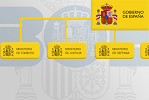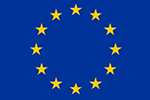Standards and requirements related to industrial products
Content
Products subject to harmonised legislation
Industrial products subject to harmonised legislation are products to which harmonised European Union (EU) legislation applies, i.e. regulations, directives or decisions. The products may be of any origin (manufactured in the EU or in third countries), the only requirement being that they are intended for placement on the European market.
In order to be placed on the market and/or put into service in the EU (and therefore in Spain) for the first time, industrial products must bear the CE marking (or pi marking in the case of transportable pressure equipment) and come with the corresponding EU declaration of conformity in accordance with the relevant legislation (directive or regulation), which may provide for certain exceptions to its application.
Within the harmonised legislation, specific legislation applies to certain types of products and there is also some general legislation that covers several types of products. Each type of product may therefore be covered by more than one specific directive or regulation and/or more than one cross-cutting directive or regulation, depending on its characteristics.
The regulation, the general requirements that a product must satisfy in order for the manufacturer to affix the CE marking, and the conformity assessment procedures for affixing the CE marking can be found here:
- Simple pressure vessels

- Pressure equipment

- Transportable pressure equipment

- Aerosol dispensers

- Gas appliances

- Lifts

- Safety of machinery

- Noise emissions from equipment used outdoors

- Equipment for potentially explosive atmospheres

- Low voltage products

- Electromagnetic compatibility

- Ecodesign

- Personal protective equipment

- Construction products

- Construction products in contact with water for human consumption

Depending on the characteristics of the product, the manufacturer must be aware of the specific and/or cross-cutting rules applicable to the product it manufactures. Even if several directives and/or regulations apply, the product must bear a single CE marking and a single EU declaration of conformity must be issued.
In addition to the CE marking, when placed on the market for the first time in Spain, products must include the corresponding data and information indicated in the relevant legislation (such as certain data or technical information for correct and safe use).
Conformity assessment
Manufacturers must carry out a risk analysis and ensure that their products comply with certain rules before placing them on the EU market.
This procedure is called a conformity assessment and it is carried out during both the design and production phase. Even if manufacturers subcontract the design or production of their products, it is still their responsibility to ensure that the conformity assessment is carried out.
The information obtained from the conformity assessment must be included in the technical documentation.
In some cases, the manufacturer may carry out a self-assessment of its own product. In others, it must be assisted by a conformity assessment body (also known as a notified body).
The NANDO![]() page shows the designated notified bodies for each directive and regulation.
page shows the designated notified bodies for each directive and regulation.
If a notified body is required to intervene, the CE marking must be accompanied by the identification number of the notified body.
In the field of industrial products, conformity with harmonised standards is a way for manufacturers to demonstrate compliance with the essential requirements set out in the implementing directives and regulations.
Harmonised standards
Harmonised standards are a specific type of European standard developed by a European standardisation body following a request known as a ‘mandate’ from the European Commission. References to harmonised standards should therefore be interpreted as relating to harmonised standards whose references have been published in the Official Journal of the EU.
Unlike the essential requirements under EU legislation, which are mandatory, harmonised standards are voluntary. Manufacturers are free to choose other technical solutions to demonstrate compliance with mandatory legal requirements.
For more information, please consult the following link: Standards and specifications: Industrial products.![]()
Construction products
The harmonised regulation of construction products is provided for in Regulation (EU) 2024/3110 and in the previous Regulation (EU) No 305/2011
.
These regulations define the rules for assessing and verifying construction products, preparing documentation for them and putting the CE marking on them so that they can be sold throughout the EU.
Regulation (EU) 2024/3110 will replace Regulation 305/2011 in the coming years. The transition from the earlier regulation to the more recent one will be phased, by product category, as the harmonised technical specifications are gradually updated. For the duration of the transition (which will end in 2040 at the latest, although it is expected to be earlier), there will be some product categories that must comply with the old regulation and others that must comply with the new regulation.
Declaration of performance and conformity (DoPC) and CE marking
If a manufacturer decides to place a construction product on the market and that product is covered by a harmonised technical specification (a harmonised standard, etc., cited in the OJEU), or a European Technical Assessment has been issued for it (in this case it is through a voluntary route, through a European Assessment Document), the manufacturer must issue a declaration of performance and conformity (DoPC) (in the 2011 regulation, this is called a declaration of performance) containing, among other things, the following information:
- Details of the manufacturer;
- Reference and description of the product;
- The evaluation and verification systems applied to the product;
- Reference to certificates or reports issued by the notified bodies (or by TABs, where applicable);
- Reference to the applicable harmonised technical specifications (harmonised standards, etc.) (or European Assessment Document where appropriate);
- The applicable declared performance, sustainability characteristics and product requirements.
Once the DoPC has been issued, the manufacturer must affix the CE marking to the product.
EU countries must designate construction product contact points to provide information on construction product requirements.
More information and guidelines on the EU Construction Products Regulation can be found at the following link:
When selecting and using construction products for building sites, recipients or receivers of products (builders, installation companies, draughtsmen and building consultants, etc.) must consult the applicable building regulations, including but not limited to the Technical Building Code, the Structural Code
and regulations on installations
.
These define the basic requirements, characteristics and performance that each type of project, building or installation must comply with and, on that basis, the characteristics and performance of the construction products used.
Once a construction product has been purchased, it is important that recipients of products check the documentation they receive (CE marking, DoPC and general product information, instructions for use and safety information). It is mandatory for the manufacturer to provide this documentation when supplying the product (in physical format or online), and for the distributor to pass it on correctly.
Products not subject to harmonised legislation
In the field of industrial products, most products are covered by harmonised EU legislation. However, products not covered by harmonised legislation and which therefore continue to be governed by national rules can still be found. In particular, national implementing legislation applies to the following products![]() :
:
- Smooth and corrugated wires
- Active steel clamps for pre-stressing concrete
- Sanitary tapware
- Welded steel tubes
- Carbon monoxide detectors
- Hot galvanised products
- Certain types of cement used in the manufacture of concrete and mortars.
In such cases, national legislation lays down certain requirements. In order to place these products on the market it is necessary to have a certificate of conformity indicating compliance with those requirements. Such certification must be issued by an accredited inspection body. Applications for certification should therefore be sent to those bodies.
In cases in which, for the time being, there is still no supervisory body for a certain type of specific product, instead of providing a certificate, you must submit a self-declaration before the competent body of the corresponding autonomous community or autonomous city, which must be available to consumers.
The principle of mutual recognition also applies when these products are exported to or imported from other EU countries.
Registers
Register of electrical and electronic equipment
Royal Decree 110/2015![]() of 20 February 2015 on waste electrical and electronic equipment (RD RAEE) maintains the obligation for all producers of electrical and electronic equipment (or their authorised representative) to register in the special section for producers of electrical and electronic equipment of the Integrated Industrial Register (RII-AEE) , provided for in Law 21/1992
of 20 February 2015 on waste electrical and electronic equipment (RD RAEE) maintains the obligation for all producers of electrical and electronic equipment (or their authorised representative) to register in the special section for producers of electrical and electronic equipment of the Integrated Industrial Register (RII-AEE) , provided for in Law 21/1992![]() of 16 July 1992 on Industry and the Regulation on the Integrated Industrial Register, approved by Royal Decree 559/2010
of 16 July 1992 on Industry and the Regulation on the Integrated Industrial Register, approved by Royal Decree 559/2010 ![]() of 7 May 2010.
of 7 May 2010.
The Register of electrical and electronic equipment is an informative register applicable in Spain and meets the requirements of Directive 2012/19/EU![]() of 4 July 2012 on waste electrical and electronic equipment, which provides that each of the Member States should maintain a State register.
of 4 July 2012 on waste electrical and electronic equipment, which provides that each of the Member States should maintain a State register.
For more information, please consult the following link: Electrical and electronic equipment![]()
Register of batteries and accumulators
This national register of producers of batteries and accumulators is unique and national and in line with the requirements of Directive 2006/66/EC![]() on batteries and accumulators and waste batteries and accumulators, which provides for the creation of a national register in each of the Member States.
on batteries and accumulators and waste batteries and accumulators, which provides for the creation of a national register in each of the Member States.
Royal Decree 106/2008![]() of 1 February 2008 on batteries and accumulators and the environmental management of their waste lays down the obligation for all producers of batteries, accumulators or battery packs to register with the Special Section of the Integrated Industrial Register (RII-AEE) , established by Law 21/1992 of 18 July 1992.
of 1 February 2008 on batteries and accumulators and the environmental management of their waste lays down the obligation for all producers of batteries, accumulators or battery packs to register with the Special Section of the Integrated Industrial Register (RII-AEE) , established by Law 21/1992 of 18 July 1992.
For more information, please consult the following link: Batteries and accumulators![]()
Information for each Autonomous Community

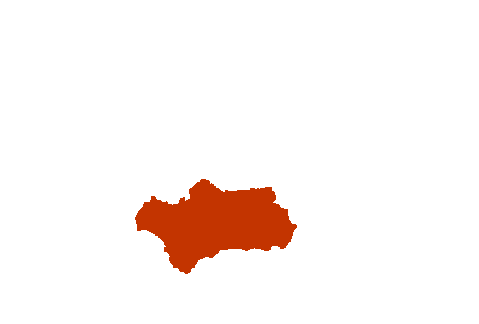
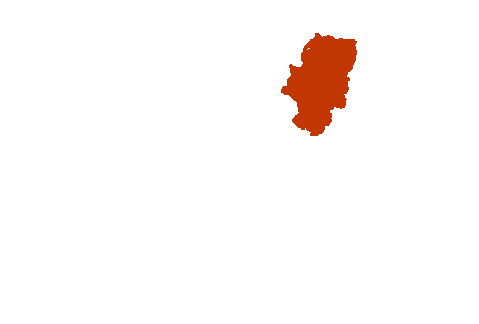

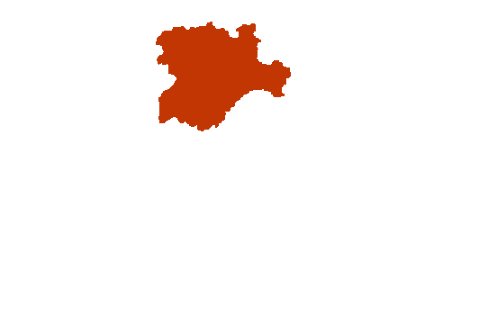


Andalucía Aragón Asturias, Principado de Balears, Illes Canarias Cantabria Castilla y León Castilla-La Mancha Cataluña Ciudad de Ceuta Ciudad de Melilla Comunitat Valenciana Extremadura Galicia Madrid, Comunidad de Murcia, Región de Navarra, Comunidad Foral de País Vasco Rioja, La







